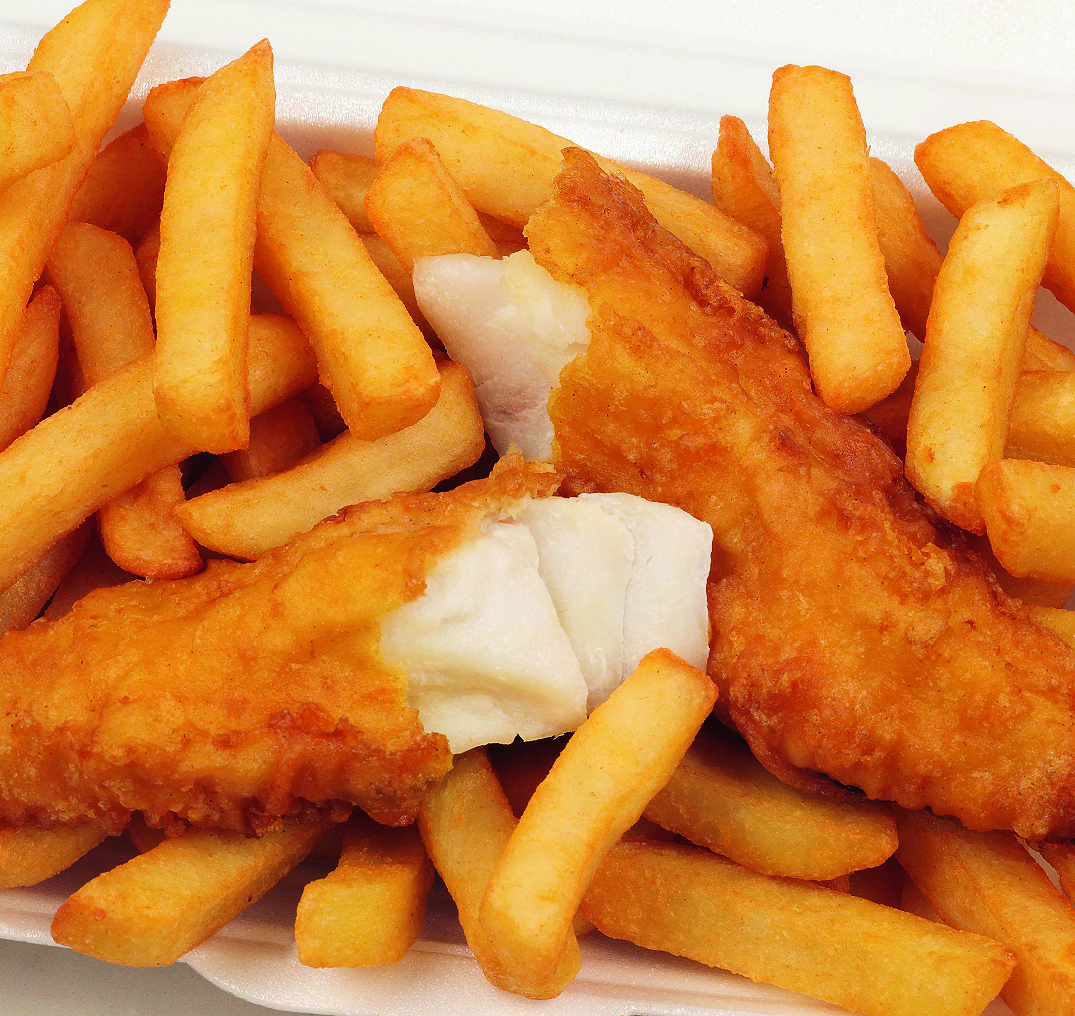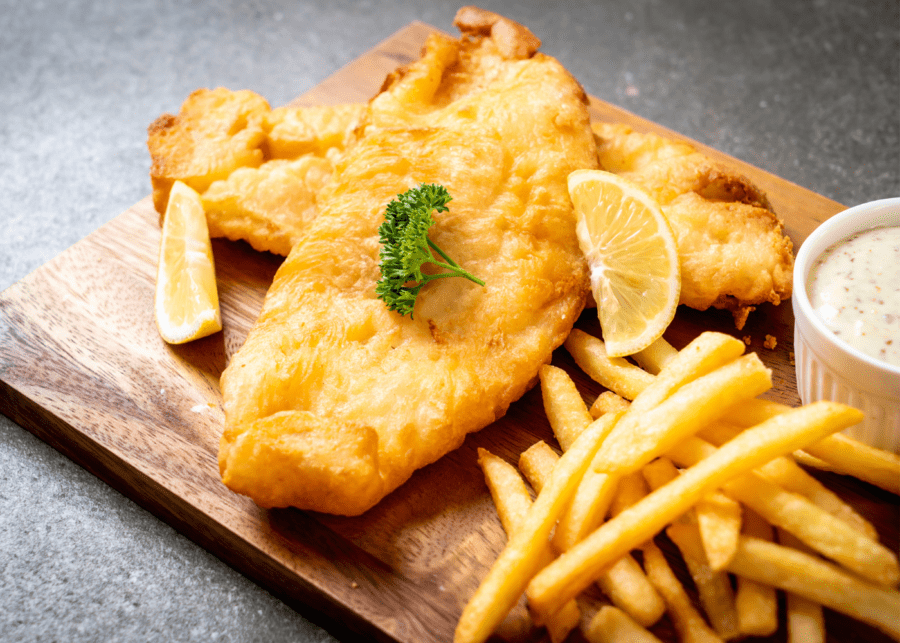Indulge in the culinary delights of Australia with our comprehensive guide to creating the perfect fish and chips. From selecting the finest fish to mastering the art of batter preparation, this recipe will elevate your home cooking to new heights.
Whether you’re a seasoned pro or a novice in the kitchen, our step-by-step instructions and expert tips will empower you to recreate this iconic dish in the comfort of your own home.
Ingredients

Classic Australian fish and chips are made with a few essential ingredients:
The fish is typically a white fish, such as flake or cod. The fish is battered and then deep-fried until golden brown. The chips are made from potatoes that are cut into thick wedges and then deep-fried until crispy.
Fish
- 1 kg white fish fillets, such as flake or cod, cut into bite-sized pieces
- 1 cup plain flour
- 1 teaspoon baking powder
- 1/2 teaspoon salt
- 1/2 teaspoon black pepper
- 1 egg, beaten
- 1 cup milk
- Vegetable oil, for frying
Chips
- 1 kg potatoes, peeled and cut into thick wedges
- 1 tablespoon olive oil
- 1/2 teaspoon salt
- 1/4 teaspoon black pepper
Fish Preparation
Selecting the right fish for your fish and chips is crucial. Opt for firm-fleshed varieties that can withstand the cooking process without becoming mushy. Some excellent choices include cod, haddock, or flathead. Freshness is key, so look for fish with bright eyes, firm flesh, and a mild ocean scent.
Once you have your fish, it’s time to clean and cut it. Rinse the fish thoroughly under cold water, then use a sharp knife to remove the head, tail, and fins. Cut the fish into bite-sized pieces, making sure to remove any bones.
Seasoning the Fish
Seasoning the fish is essential for adding flavor and enhancing its natural taste. Sprinkle the fish pieces liberally with salt and pepper, and consider adding other seasonings such as paprika, garlic powder, or lemon zest. Let the fish rest for at least 15 minutes to allow the seasonings to penetrate the flesh.
Achieving a Crispy Batter
The key to perfect fish and chips is a crispy batter. To achieve this, use a combination of plain flour and cornflour (cornstarch) in a ratio of 2:1. Add cold water gradually while mixing until you reach a smooth, thick batter.
The batter should be thick enough to coat the fish pieces evenly but not too thick that it becomes stodgy.
Batter Preparation

To achieve the classic golden-brown, crispy exterior of Australian fish and chips, a light and airy batter is essential. The batter should coat the fish evenly without being too thick or heavy.
The traditional Australian fish batter is made with a combination of plain flour, cornflour, baking powder, salt, and water. The proportions are typically 1 cup of plain flour, 1/2 cup of cornflour, 1 teaspoon of baking powder, and 1/2 teaspoon of salt.
The water is added gradually until the batter reaches a smooth, pouring consistency.
Mixing the Batter
- In a large bowl, whisk together the flour, cornflour, baking powder, and salt.
- Gradually add the water while whisking constantly. Continue whisking until the batter is smooth and free of lumps.
- The batter should be thick enough to coat the fish evenly, but not so thick that it is difficult to pour.
- Allow the batter to rest for 15-20 minutes before using. This will help the batter to develop a light and airy texture.
Frying Techniques
Achieving perfectly fried fish and chips requires precise temperature control and careful execution. The ideal temperature for frying is between 350-375°F (175-190°C). This temperature range allows the fish and chips to cook evenly without burning or becoming soggy.The deep-frying process involves submerging the battered fish and chips in hot oil.
Place the fish and chips gently into the oil using a slotted spoon or tongs to avoid splashing. Cook the fish for 7-10 minutes, or until it is golden brown and flakes easily with a fork. For the chips, fry for 3-5 minutes, or until they are golden and crispy.To
prevent soggy or undercooked fish and chips, ensure the oil is at the correct temperature before frying. Use a kitchen thermometer to monitor the temperature and adjust the heat accordingly. Avoid overcrowding the fryer, as this can lower the oil temperature and result in soggy food.
Drain the fish and chips on paper towels after frying to remove excess oil.
Seasoning and Sauces
Australian fish and chips are traditionally seasoned with salt and pepper. However, other seasonings can be used to enhance the flavor, such as lemon pepper, garlic powder, or paprika.
Fish and chips are commonly served with a variety of sauces, including tartar sauce, tomato sauce, and malt vinegar. Tartar sauce is a mayonnaise-based sauce that is flavored with dill, capers, and onions. Tomato sauce is a tomato-based sauce that is similar to ketchup.
Malt vinegar is a vinegar that is made from malted barley.
Tips for Creating a Flavorful and Balanced Seasoning Blend
- Start with a base of salt and pepper.
- Add other seasonings to taste, such as lemon pepper, garlic powder, or paprika.
- Use a light hand with the seasonings, as you can always add more but it is difficult to remove them.
- Taste the seasoning blend as you go and adjust it to your liking.
Presentation and Serving
Traditionally, Australian fish and chips are presented in a newspaper-lined basket or on a plate. The fish is placed on top of the chips, and the dish is often accompanied by lemon wedges and tartare sauce.
It is important to serve the fish and chips hot and fresh. This will ensure that the fish is flaky and the chips are crispy. To keep the dish warm, you can place it in a preheated oven or on a warming tray.
Creating an Appealing Presentation
- Arrange the fish and chips in a visually appealing way. For example, you could create a pyramid shape with the fish on top or fan out the chips around the fish.
- Use fresh, vibrant colors. For example, you could add a sprig of parsley or a lemon wedge to the dish.
- Serve the dish on a clean, white plate or in a basket lined with clean newspaper.
Variations and Adaptations
The classic Australian fish and chips recipe is a versatile culinary canvas that invites creativity and adaptations. While the core elements remain unchanged, variations abound to suit diverse palates and dietary needs.
One popular variation is the choice of fish. Traditionally, Australian fish and chips use flaky white fish like cod or snapper. However, other species such as barramundi, flathead, or even salmon offer unique flavors and textures.
Batter Variations
The batter coating can also be customized to achieve different textures and flavors. Some chefs experiment with gluten-free flours like almond or chickpea, while others incorporate herbs and spices into the batter mix. For a crispy crunch, consider adding a dash of baking powder or club soda.
Modern Interpretations
Modern interpretations of fish and chips push the boundaries of tradition. Some chefs create “deconstructed” versions, serving the fish and chips separately with innovative sauces and garnishes. Others infuse the batter with Asian flavors, creating a fusion of culinary cultures.
Customizing to Preferences
To cater to personal preferences, consider adjusting the seasoning or sauces. For a tangy kick, add a squeeze of lemon juice or a dollop of tartar sauce. Those with dietary restrictions can opt for gluten-free breading or request grilled fish instead of fried.
Final Thoughts
With its crispy golden exterior, tender flaky fish, and tangy sauces, this Australian fish and chips recipe will tantalize your taste buds and leave you craving for more. So gather your ingredients, fire up your stove, and embark on a culinary adventure that will transport you to the vibrant shores of Australia.
Q&A
What is the secret to achieving a crispy batter?
The key to a crispy batter lies in the ratio of flour to liquid. A thicker batter will result in a crispier exterior, while a thinner batter will be more delicate. Experiment with different ratios to find your preferred texture.
Can I use other types of fish besides cod?
Absolutely! While cod is a traditional choice, you can substitute it with any firm white fish, such as haddock, snapper, or barramundi. Each fish will impart its own unique flavor to the dish.
How do I prevent my fish and chips from becoming soggy?
To avoid soggy fish and chips, ensure that your oil is hot enough before frying. The ideal temperature for frying is between 350-375°F (175-190°C). Also, don’t overcrowd the fryer, as this will lower the oil temperature and result in soggy food.
